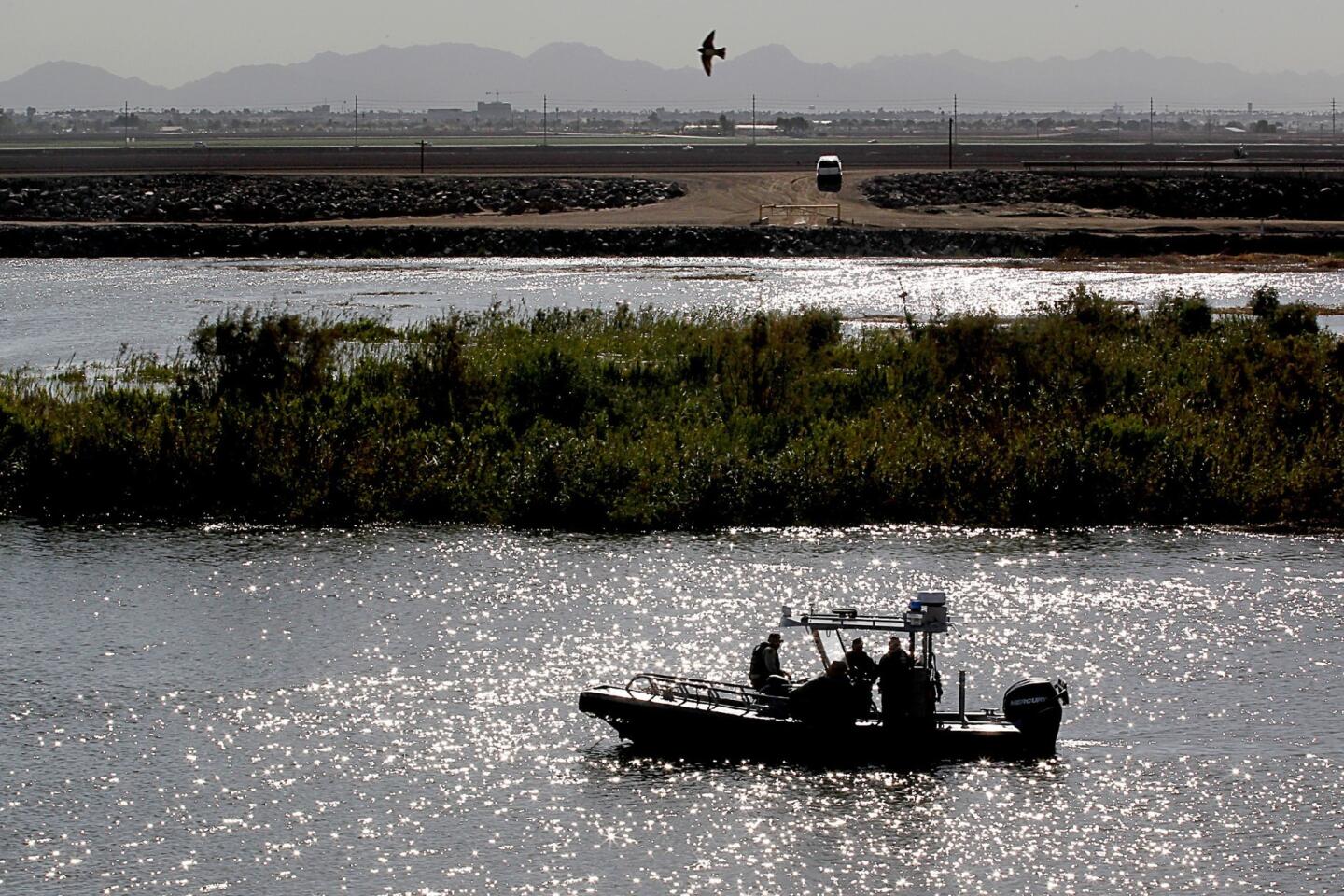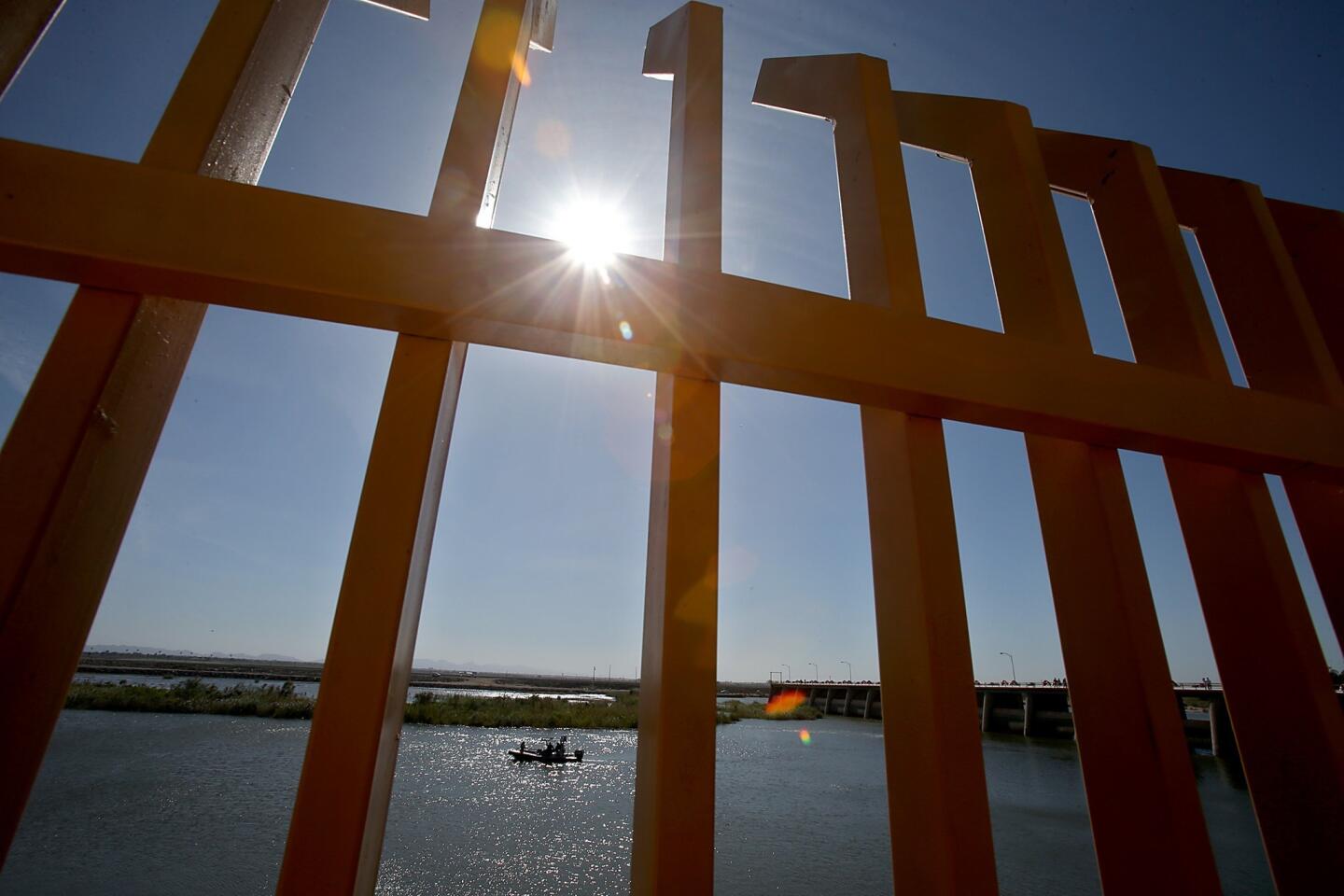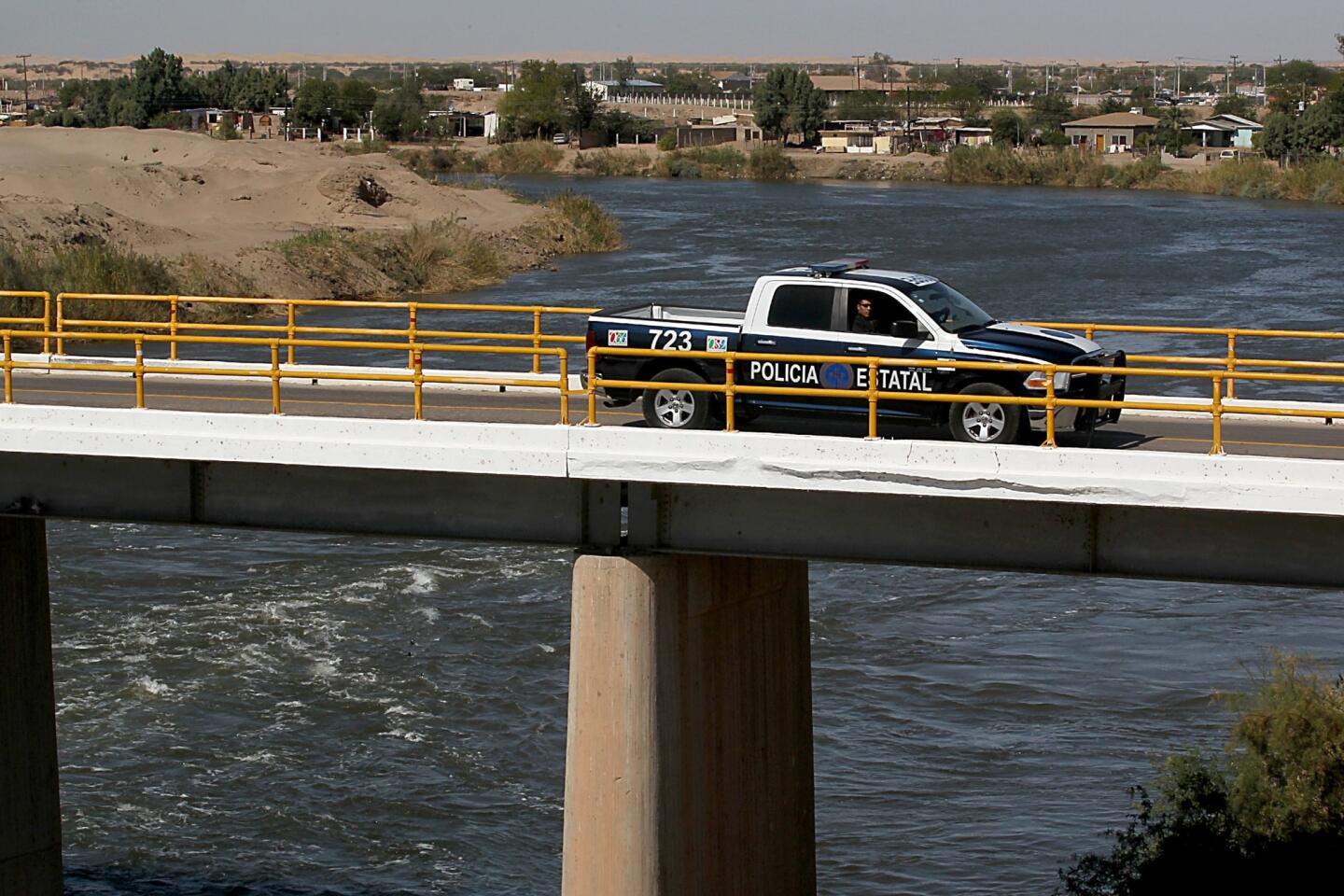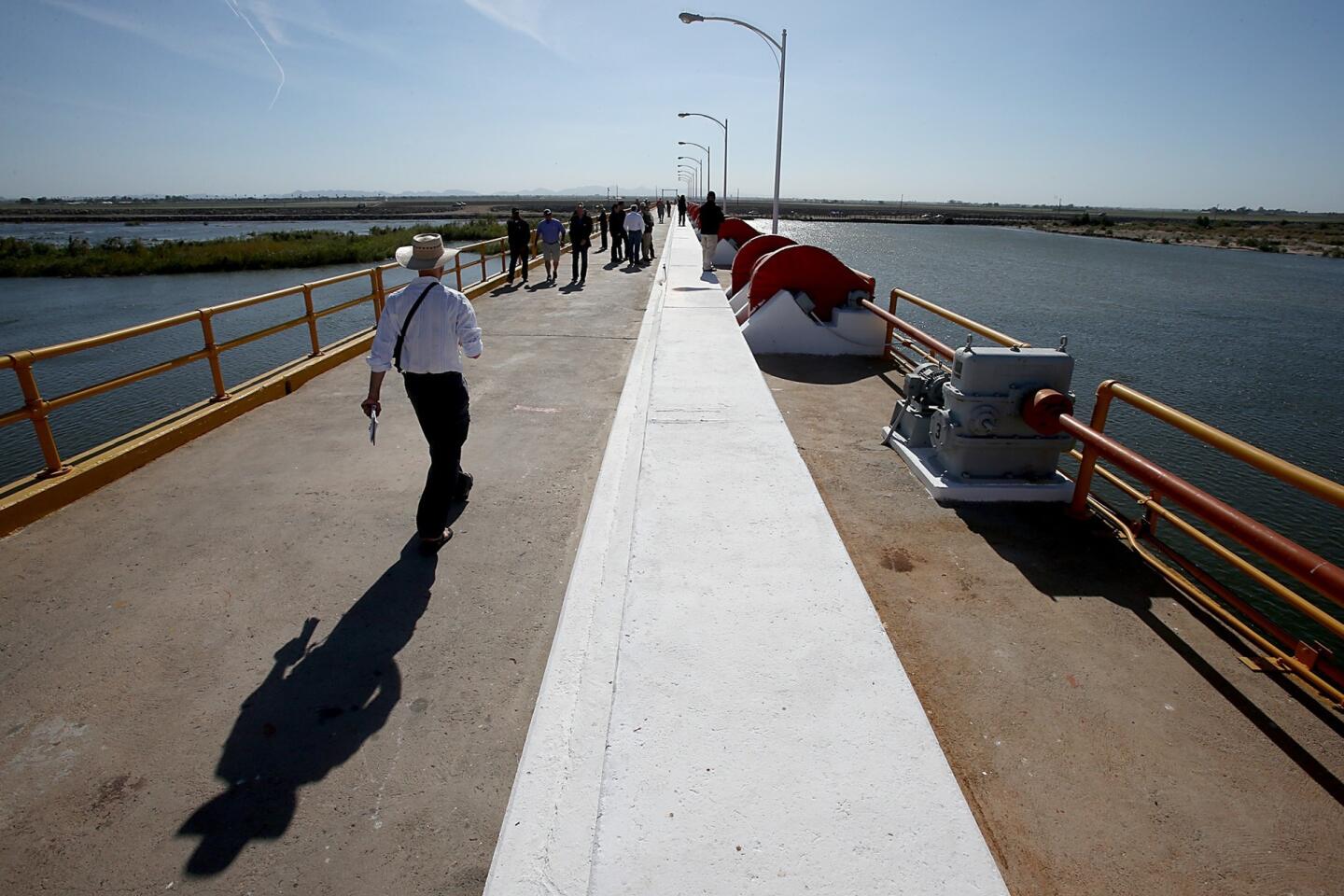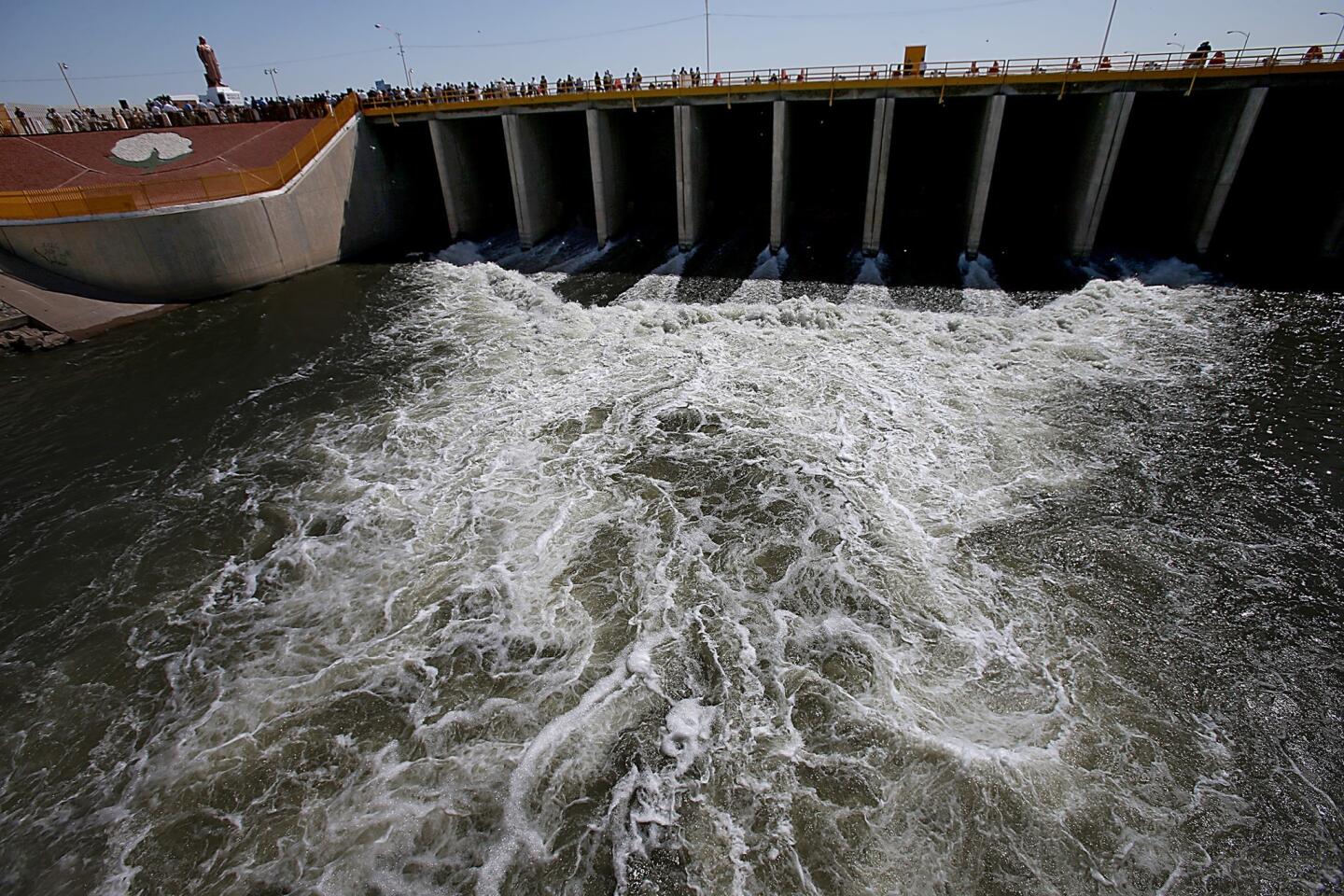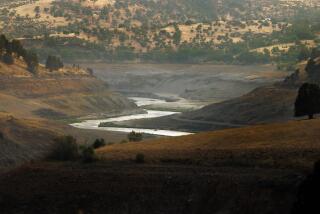Water, wildlife surge back into once-parched Colorado River delta
LOS ALGODONES, Mexico — Osvel Hinojosa knew that an infusion of water would bring the Colorado River delta back to life. But in just a few days, a U.S.-Mexican experiment to revive the delta environment has exceeded his expectations.
The water is running deeper, faster and wider than anticipated in a channel that was once bone-dry. Hinojosa has spotted hawks, egrets and ospreys flying above the newly flowing water. He’s even seen beavers.
“It’s just amazing to see that we can recover the river and see it alive again,” said Hinojosa, water and wetlands program director at Pronatura Noroeste, a Mexican water conservation group.
On Thursday, Hinojosa joined more than 100 Mexican and American officials for a ceremony at the Morelos Dam, which sits on the international boundary, to mark the fifth day and climax of the experiment.
The release, or “pulse,” of water started slowly Sunday when officials lifted the gates at the Morelos Dam, west of Yuma, Ariz., releasing about 700 cubic-feet of water per second. It reached its peak Thursday when water rushed through the dam at about 4,200 cubic-feet per second.
Over eight weeks, about 105,000 acre-feet will be released. (An acre-foot is the amount of water required to cover an acre a foot deep, or about 326,000 gallons — enough to supply two average homes for one year.)
Except when filled by rain, the river channel is parched. It hasn’t had water consistently flowing since the 1960s, before dams and diversions cut off the river.
Hinojosa stood on the Morelos Dam and looked up at the sky filled with swallows.
“I think this is a cue for them,” he said of the swallows and other birds. “They see the water moving. They know there will be food. You can just sense that excitement in the wildlife.”
Ian Wilson, a spokesman for the Sonoran Institute in Tucson, says it’s wonderful to see the river flowing again, especially after years of planning by officials on both sides of the border.
“Just to see it happen,” he said, his voice almost drowned out by the sound of gushing water from the gates. “You just have to pinch yourself.”
The dam would normally divert all the river water into an aqueduct that serves agriculture and Tijuana. South of the dam, the river channel travels about 75 miles to the Gulf of California.
Last week, the International Boundary Water Commission, made up of Mexican and U.S. officials, released water from Lake Mead in Nevada to make the pulse possible. The commission has said that despite the punishing drought in the Southwest, California and Arizona would still receive their regular allotments of Colorado River water this year.
Although there have been experimental high-flow water releases in the Colorado River on the U.S. side of the border, this is the first pulse for the delta. It is part of a five-year pilot project designed to revitalize the delta environment.
The water experiment has gone so well that it’s spilling over banks and into secondary canals. The seeds of willows and cottonwoods, which rain down this time of year, have been riding the currents. Normally, they would just collect in the arid riverbed.
As of Wednesday evening, the water had reached as far as 28 miles south of the Morelos Dam, Hinojosa said. Officials had doubted the water would reach the Gulf of California but now think the water will flow to the marshes that stretch from the sea to about 10 miles inland.
Hinojosa, who has canoed down the river each day since the pulse to count birds and other wildlife, said the river had been changing every day, bringing more wildlife to the region.
After the release ends, experts from both countries will study its effects. Will water be left standing or will it be absorbed into the soil? No one knows.
The release, which was designed to mimic a flood produced by a spring snowmelt, is the only one planned so far. At the end of the five-year pilot project, now in its second year, officials from both nations will discuss whether there should be other large discharges.
Juan Butron Mendez, 63, a farmer who also gives guided tours for Pronatura Noroeste, remembers the rapid currents of the river of his youth. On Thursday, he couldn’t stop smiling as the water poured out of the dam.
“I’m just so happy,” he said. “Just to see areas that were once desert are now filled with water.” All around birds seemed to be everywhere, swooping down to skim the water’s surface before heading skyward once more.
More to Read
Sign up for Essential California
The most important California stories and recommendations in your inbox every morning.
You may occasionally receive promotional content from the Los Angeles Times.
